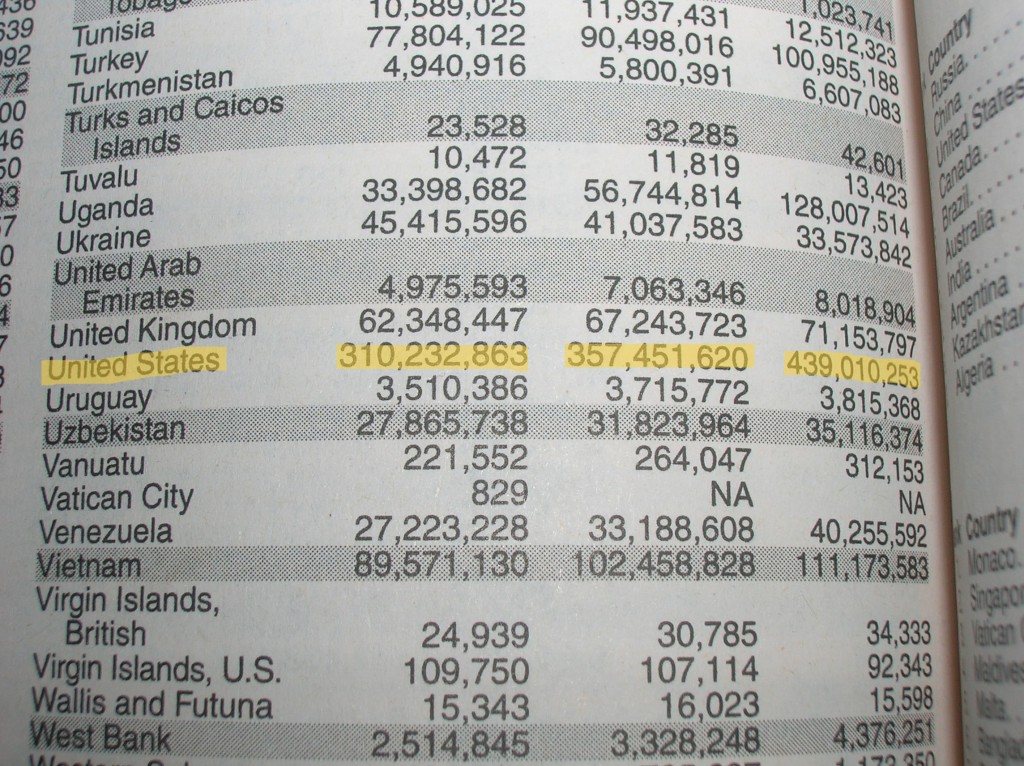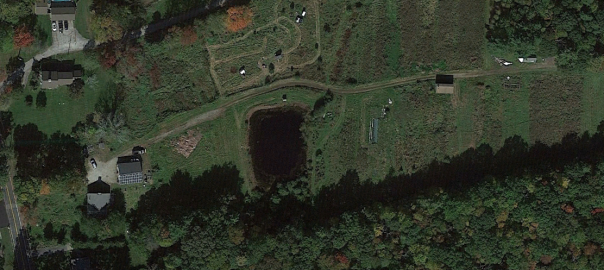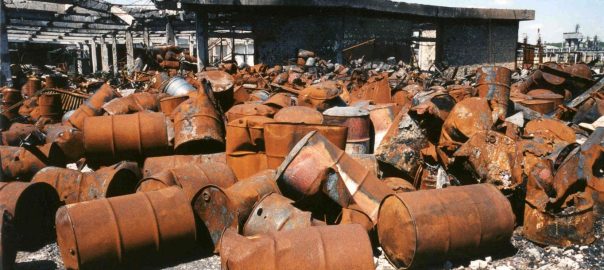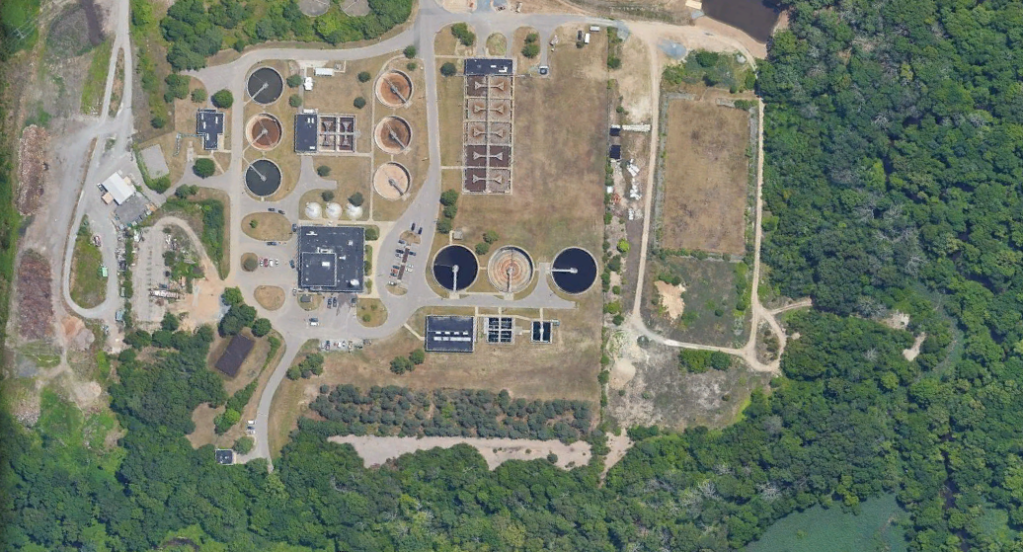I recently took a look at my old 2011 World Almanac (see image below) that had mid-year population projections for 2025 and 2050 and realized that back in 2010 the US Census Bureau was projecting the population of the USA to be about 357.5 million in 2025, and 439 million in 2050. As of 2024, it looks like the USA will likely have “only” 338 million people in 2025, a drop of almost 20 million people from the 2010 forecast when the USA had about 310 million people (mid-year 2010). This statistic stood out to me given the recent discussions about depopulation, excess deaths, and labor shortages in the alternative media over the past few years. That 2010 US Census Bureau projection was made only 13-14 years ago.

This population observation from the 2011 World Almanac opens up a lot of questions, such as, was the projection error/inaccuracy caused by a declining birth rate, an increasing mortality rate, or a combination of the two trends from 2010 to 2024? The Great Recession had already caused a significant decline in the birth rate in the USA right after 2007, so I imagine that decline was factored into the US Census Bureau’s 2010 forecast. Also, the surge in immigration into the USA over the past few years would obviously not explain the drop in the population projection. From the 2023 World Almanac, it appears that the birth rate in the USA dropped from 14.3 births/thousand people in 2007 to 11.0 births/thousand people in 2021. The mortality rate increased from 8.0 deaths/thousand people in 2007 to 10.3 deaths/thousand people in 2020 (see graph below). That’s a 23% drop in the birth rate and an astounding 28.75% increase in the mortality rate all the while health expenditures in the USA have ballooned to almost $5 trillion per year.

Labor Shortages and Environmental Health
In the past few years, many governments and many employers in different industries have been complaining about labor shortages at the same time that they ignore or dismiss that they are subtly poisoning their own populations with aluminum nanoparticles, glyphosate, excessive fluoride, non-native EMF radiation such as Wi-Fi and blue light from screens, and numerous other toxins that are actually recognized as toxins by mainstream society (e.g. microplastics, per-fluorinated compounds (PFAS), pesticides, etc.). In addition, as investigators like Edward Dowd have pointed out, after the experimental injection rollout in 2021 many people dropped out of the labor force due to disabilities or firings brought on by vaccine mandates issued by many of the same governments and corporations that are now stressed out about labor shortages. Unfortunately, our dysfunctional, demoralized and overworked society also contributes to many working-age people’s suicides, drug overdoses, or accidental deaths. As a reaction to that situation, many in the younger generations are attempting to work more meaningful jobs closer to nature, and are not applying to standard career positions (e.g. engineer, account manager, a spot in the military, etc.). Lastly, many couples that would have otherwise stayed together and started a family ended up breaking up under the socioeconomic pressures of trying to maintain a mainstream middle to upper middle class lifestyle (e.g. working two or more demanding jobs, no time for each other, disagreement on gender roles, etc.) and this drops the birth rate.
Societal Renewal
Given all the points mentioned above, why then should governments and employers be surprised at the current labor shortages? The slow motion collapse of modern civilization that many bloggers wrote about in the Peak Oil movement of the late 2000s and early 2010s appears to be occurring, though it seems to be manifesting through the labor and financial markets and the “cost of living” crisis as opposed to being brought about by acute resource shortages (e.g. oil skyrocketing to $300/barrel causing a fast economic collapse).
Instead of a societal collapse brought on solely by external causes (e.g. resource shortages, natural disasters, etc.), there actually may be a larger internal mental/psychological component as well, as many people such as myself have been asking themselves certain questions. For example, why should we work 40 to 60+ hour weeks to pay for things we can’t really afford or even want due to rising prices (e.g. $400,000 house, $45,000 car, $400/month groceries etc.)? It seems like trying to win the Red Queen’s race (from Alice in Wonderland), running faster and faster just to stay in the same place. Why not work part-time or drop out altogether and devote more time to building a more enjoyable system? A recent article discusses how many Millennials are thinking at least somewhat along these lines. Now, this may seem like a bad thing in a sense (a collapse of the current system), but it also means more time to devote building simpler houses or cabins, starting organic farms, growing suburban permaculture gardens, socializing and/or doing any number of other useful things to improve our lives on our own terms.

Demographics and the Environment
Maybe 10 or so years ago, I used to be the kind of environmentalist that was actually happy when seeing population projections that showed that human populations would peak and fall, which would then presumably slow down the destruction of ecosystems. However, knowing now that there seems to be possibly deliberate yet subtle attempts by the technologic system to sabotage human biology/health in order to increase mortality rates and/or lower fertility rates, I definitely do not agree with this approach to the population issue from a moral perspective. If people want to have smaller families to lower pressure on the environment, that’s a good idea, but it should be an informed consent choice. I already wrote in my December 2022 post, Overpopulation or Roles Played, that obsessing about overpopulation is probably a waste of time for environmentalists. We need people to be healthy and clear-minded, and when people have healthy and clear minds and bodies, they consume a lot less resources and are able to appreciate nature a lot more. Also, we definitely need a lot of people to assist in healing the damaged Earth (e.g. starting regenerative agriculture farms, restoring salt marshes, reforestation projects, contaminated site cleanup, etc.).
Conclusion
All in all, the slow motion collapse of the current system may actually be a blessing in disguise. We can slowly decouple from this system and start or continue building a much better system than we currently have now. Many people in the alternative society movements have been laying the groundwork for a better system for years and they need some help to really get it going.

“Man has lost his way in the jungle of chemistry and engineering and will have to retrace his steps, however painful this may be. He will have to discover where he went wrong and make his peace with nature. In so doing, perhaps he may be able to recapture the rhythm of life and love of the simple things of life, which will be an ever-unfolding joy to him.”
Richard St Barbe Baker



















